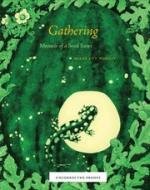

Because of indiscriminate use of chemical fertilizers for decades the organic matter content of soils has come down to less than 1 per cent. In addition, the use of pesticides led to pest resurgence and difficult-to-control weeds species.
The residues of the chemicals cause concern over the safety of our food and our ability to sustain production. Adding chemical fertilizers like nitrogen causes infant diseases like methanoglobinaemia.
Because of the overuse of chemical fertilizers, the expectation that organic farming by reverting to the use of manures, green manures, urban waste, rural wastes, etc. would have the ability to bring sustainability to agriculture. Can commercial agriculture be eco-friendly? Is imperative for researchers and planners to develop an alternative, a new and viable strategy to replace chemical farming.
When most people think organic gardening the above few paragraphs are obvious thoughts; fundamental practices of organic growing. However, what many do not grasp is that it is more than soley changing soil feeding from the current standard of chemicals to organic materials. Organic gardening is formed of many parts that work together to create a whole picture. I guess you could say that organic gardening is holistic (the theory that whole entities, as fundamental components of reality, have an existence other than as the mere sum of their parts). Organic gardening relies upon bacteria, fungi, insects, birds, water, sun (and shade) and all other components of a living and working community. By growing a variety of plants you create environment for beneficial insects or animals, supplement your soil, and discourage pain in the butt pests to encourage a living ecosystem of helpful bacteria and beneficial fungi.
Organic farming is a production of crops which avoids or greatly excludes the use of synthetic compound fertilizers, pesticides, growth regulators and live-stock feed additives. To the maximum extent feasible, organic farming systems rely upon crop rotation, crop residues, animal manures, legumes, green manures, off-farm organic wastes, mechanical cultivation, mineral bearing rocks and natural biological pest control to maintain soil productivity, to supply plant nutrients, and to control insects, weeds and other pests.
The major sources of organic plant nutrients are farm yard manure, rural and urban compost, sewage sludge, pressmud, green manures, crop residues, forest litter, industrial waste and by-products.
The number of biofertilizers such as blue green algae (BGA) and azolla can also be used extensively to meet the nitrogen demand of a crop.
Phosphorous-solubilising and mobilising organisms such as phosphobacterium and vesicular arbuscular mycorrhizae (VAM) are quite helpful in meeting the phosphorus demand of a crop. Potassium for the crops can be supplied by using potassium rich organic amendments such as rice straw composted using tricoderna harzianum and composted coconut coir pith.
Field experiments conducted in Annamalai University to study the impact of organic farming of Rice yield and quality, the results of the study clearly indicated a positive approach towards practicing complete organic farming in attaining premium quality produced with higher grain yield.
Application of 75 per cent N through FYM and 25 per cent N through NC produced the largest rice grain yield - 6.13 t/ha compared to the yield obtained with recommended fertilizer schedule (100:50:50 kg N, P2O5, K2O/ha the yield being 4.3 t/ha). Quality characters viz., milling recovery, head rice percentage, protein percentage also were significantly higher with organic sources.
Whereas study carried out in Japan to know the effect of organic farming on soil properties, it found that with time, there was an increase in organic matter content, soil reaction, exchangeable CaO and MgO, available phosphorus and trace elements of manganese and boron. However, the potassium content was erratic.
Soils using poultry manure compost for more than 10 years showed much accumulation of calcium and available phosphorus and a serious imbalance of bases.


 The food industry's digusting secrets exposed. How to protect yourself.
Click Here!
The food industry's digusting secrets exposed. How to protect yourself.
Click Here!

Daughter of Iowa farmers, Missouri homesteader, and mother of five, Diane Ott Whealy never anticipated that one day she would become a leader in a grass-roots movement to preserve our agricultural biodiversity. The love for the land and the respect for heirloom seeds that Diane shared with her husband, Kent Whealy, led to their starting Seed Savers Exchange in 1975. Read More...

